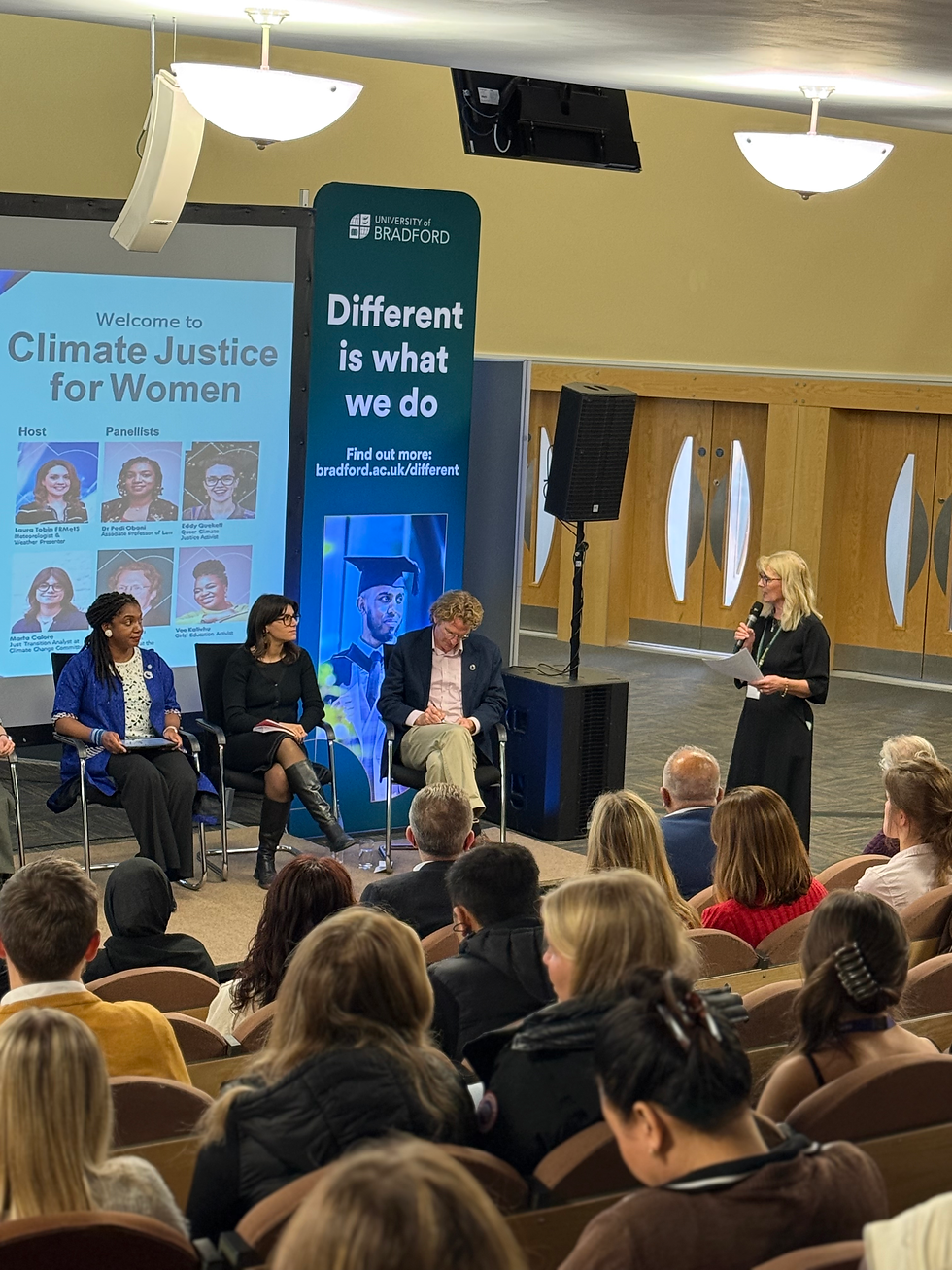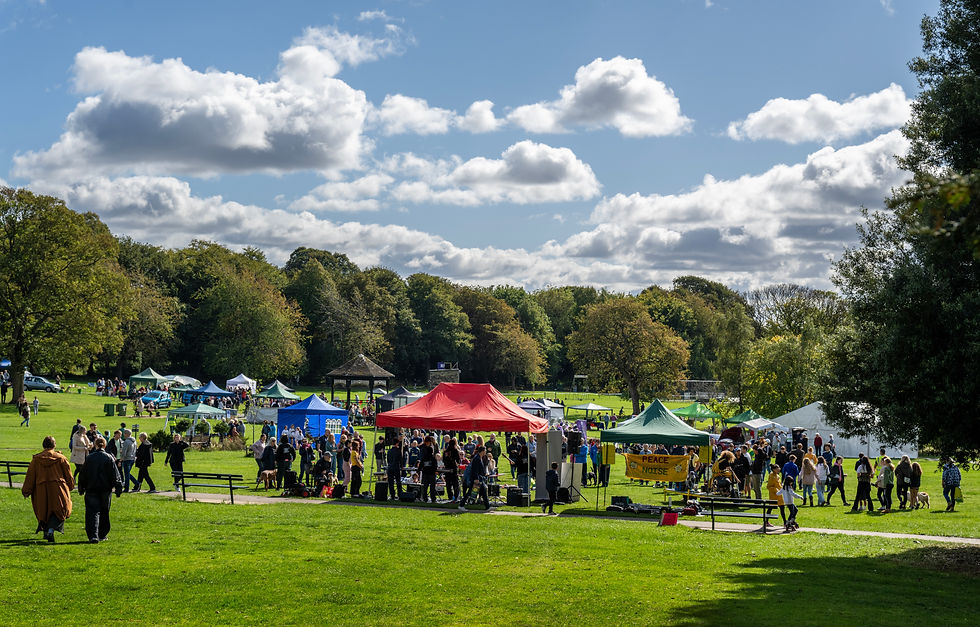The Climate Emergency
- Climate Action Leeds

- Jul 1
- 4 min read
This blog was written by Paul Chatterton, Professor of Urban Futures in the School of Geography at the University of Leeds.
In 2019 Leeds City Council declared a climate and ecological emergency to tackle the pressing issues of rising carbon emissions and the loss of nature. It was an exciting time. Thousands of other councils around the world were doing the same, school children were on climate strike following the lead of Swedish schoolgirl Greta Thunberg, the protest group Extinction Rebellion were holding protest in cities across the world, and leading global scientists issued reports warning of the consequences of not taking rapid action on climate change.
So, what is this climate emergency?
Leading global scientist have said that if we do not reduce to zero all the carbon emissions we create from our daily lives by 2050 (mainly from burning coal, oil and gas), then there won’t be a safe climate for future generations. All the people on the planet currently produce about 50 gigatons of Earth heating greenhouse gases every year. That’s a huge amount, and reducing these is a huge task – that’s why we’re calling it an emergency. But it’s not just about the climate, it’s also an emergency for nature. For example, there has been a 70% decline in wildlife population since the 1970s. And it’s not just about the future – extreme weather events like floods, wildfires and droughts affected 150 million people last year. But as we tackle these emergencies, we also have to tackle the less visible social emergency. For example, nearly 10% of the world population lives in extreme poverty, and that includes many people here in the UK too.
It's not all doom and gloom! […] Around 2 billion trees are planted every year worldwide – that’s 5 million every day
But it’s not all doom and gloom. There are many good news stories. For example, in 2024 clean renewable energy accounted for nearly all of the growth in new global power – that’s over 600 giga watts of the new power. In the UK only a few years ago, much of our electricity came from the dirty fossil fuel coal, but last year coal was totally eliminated from power generation in our country. We are also making huge progress in reducing carbon emissions from vehicles. Across the world there are now 40 million electric vehicles accounting for nearly 20% of all cars sold. And we are making huge strides to protect nature. Around 2 billion trees are planted every year worldwide – that’s 5 million every day. It will take a lot of money to solve problems this big and the good news is that around US$1.3 trillion is invested annually in global climate finance to reduce carbon emissions and create climate safe solutions.
What is Leeds doing?
So what’s happening in Leeds? There are a huge range of activities emerging to protect people and planet. In the city council, the Climate Emergency now has its own formal advisory committee, all staff have training, and it is one of our three big priorities in the Council’s strategy.
Transport
Leeds City Council has got one of the most pioneering transport strategies in the country working hard to build hundreds of kilometres of new cycle lane, electric vehicle charging points, shifting its entire fleet to electric, the Beryl rental E bikes, electric buses, school streets to promote walking and cycling in schools, and the most exciting and long awaited of all – a new tram, set to transform travel in the city in the 2030s.
Homes
Leeds is also leading the way in terms of how we heat our homes, laying down a heat network called PIPES which takes waste heat from the incinerator to provide low-cost low-carbon heat for Leeds homes.
Wildlife
We have huge ambitions to increase trees in Leeds, doubling tree canopy cover over the next 10 years by planting 6 million trees.
Food
Leeds also has an exciting food strategy, promoting more local healthy and affordable food that is produced and consumed in the city.
What more is there to do?
Transport is the big one, as the city is still really ‘locked in’ to car use, especially for short journeys.
These are all fantastic elements on our way to creating a greener, safer and happy city by the 2030s, but there’s still more to do.
Transport is the big one as the city is still really locked into car use, especially for short journeys. Did you know that one quarter of all car journeys are under 1 mile? We need communities, businesses and families to join together and raise the ambition for reducing vehicle pollution, road deaths and carbon emissions. It doesn’t mean getting rid of your car, but there are many little journeys here and there that families and communities across the city could swap out and do by foot and bike instead.
Food is another big area and there is a lot that families can do. There are options like using the famous Leeds city market for the weekly shop, joining a veg box scheme or one of the amazing community supported agriculture projects like Kirkstall or Meanwood farm, or becoming a member of a consumer co-op to club together and buy food. At the same time we can ask ourselves do we need to keep buying more stuff or if we do, can we get it secondhand, repair goods or borrow them from neighbours or the ‘Library of Things’?
So as we head towards the 2030s, what kind of city do we want? We need to keeping in mind what life will be like for families and children across the city. What we do now, will really have an impact on how safe, affordable and clean the city will be for the next generation.
So, by the 2030s…
How can walking and cycling become the norm for those that can, how can food be more local with green spaces devoted to food production?
How can we heat our homes differently through solar, wind and heat pumps rather than gas boilers?
How can we create stronger communities, with better greenspaces, affordable housing and safe places for children and families to play.
The original article written by Paul Chatterton can be found here: https://wearechildfriendlyleeds.com/2025/05/19/what-will-leeds-look-like-in-2030/




Comments